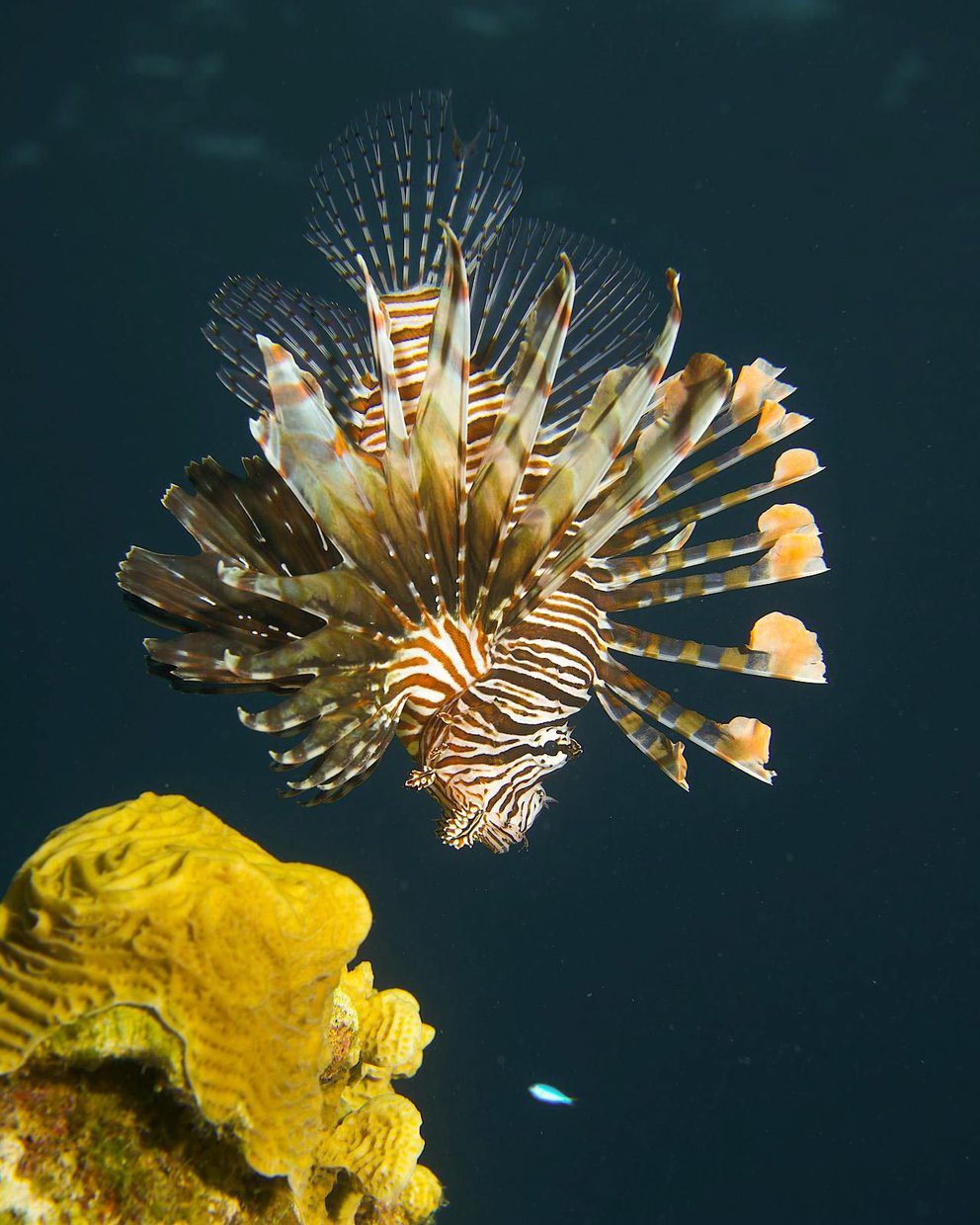
The Lionfish Problem in the Cayman Islands
Learn more about how the invasive lionfish is an eco-disaster for the Cayman Islands.


Lionfish - A Beautiful But Destructive Fish
While lionfish are strikingly beautiful creatures with their distinctive stripes and spines, they are also an eco-disaster for the Caribbean and its dive industry.
Native to the Indo-Pacific region, it’s believed that an aquarium owner released only eight captive lionfish off the coast of Florida in 1985. They breed with great success and are now established across the Caribbean Sea as well as along the coast from North Carolina to South America, including the Gulf of Mexico.
The problem with lionfish is that they are voracious predators that devour small and juvenile fish and crustaceans in large quantities, as well as compete with native species for space and other food. They start reproducing at less than one year old and can lay up to 30,000 eggs every four days. All of this, plus the fact they have no known predators, except human beings, means they can wipe out approximately 80% of a reef extremely quickly, giving rise to a major problem in Cayman waters and to its dive industry.
Lionfish Culling
In order to combat the lionfish crisis, the Cayman community is doing its bit by supporting a lionfish culling programme. While residents of the Cayman Islands can apply for a licence to spear lionfish, visitors don’t need to feel left out. More and more dive operators are offering holiday makers the opportunity to take a lionfish culling course. Participants need to be certified divers before taking the half day course which costs US$100 and includes a guided dive. Equipment rental is an additional cost. Once the course is completed divers can act as spotters or borrow a spear to cull lionfish on accompanied dives. For more information contact Ocean Frontiers.
Eating Lionfish
A surprising fact is that lionfish is delicious. A white fish, they are mild and flaky when cooked. If you don’t want to catch them yourself, they appear on the menu at Eagle Rays Bar & Grill in the East End as an ingredient in their famous Lionfish Tacos!
Fun Facts!
- A lionfish is capable of expanding its stomach over 30 times in volume.
- The largest lionfish speared in the Cayman Islands was 44cm, the smallest was 19mm.
- Over 400 lionfish culling spears have been issued by the Government in the Cayman Islands.
For more information visit the lionfish page on the Cayman Islands Department of Environment website.
Lionfish Venom
The sting of the red lionfish causes intense pain immediately and leads to several hours of extreme pain, depending upon the amount of venom received. To treat lionfish stings you should immerse the affected area in hot but non-scalding water for two to three hours and seek medical attention immediately!


